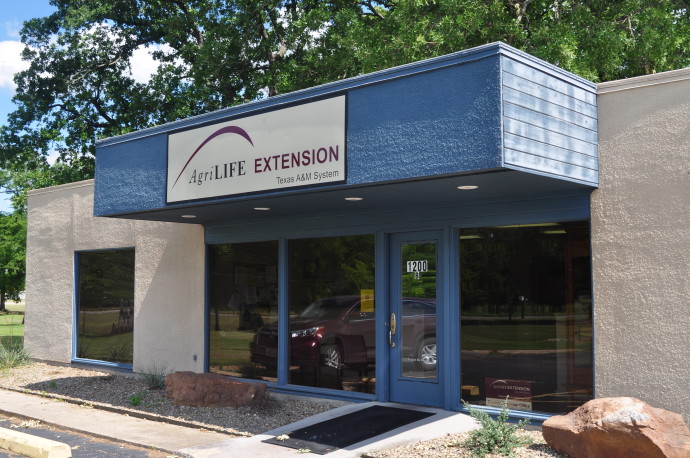 As we move into the warmer weather, the popular “Monthly check list” for the gardeners released by Texas A&M AgriLife Extension (compiled by Dr. William C. Welch, Professor & Landscape Horticulturist) has become handy for home gardeners. Here the list for the Month of June:
As we move into the warmer weather, the popular “Monthly check list” for the gardeners released by Texas A&M AgriLife Extension (compiled by Dr. William C. Welch, Professor & Landscape Horticulturist) has become handy for home gardeners. Here the list for the Month of June:
- Supplemental irrigation is essential for all but the hardiest plants in times of extended drought. Water lawn and garden thoroughly, but not too frequently. As a general rule, soak to a depth of 8 inches. Finish watering by early afternoon, to lessen the chance of disease.
- Check watermelons for ripeness regularly. They are usually ready when the bottom portion is definitely yellow green or even yellow in color.
- Take a critical look at your landscape while at the height of summer development. Make notes of how you think it can be better arranged, plants that need replacement, overgrown plants that need to be removed, and possible activity areas that can be enjoyed by family members.
- Check for insects and diseases. Destroy badly infested plants. Spider mites can be especially troublesome at this time. Select a chemical or organic control, or use insecticidal soap.
- Especially during dry summers, soil moisture becomes extremely important and essential for good plant production. Because continual watering is oftentimes costly and time consuming, it pays to conserve the moisture around plants. This is best done by mulching. A good mulch will retain valuable moisture needed for plant growth, and improve overall gardening success. Mulches are usually applied 2 to 6 inches deep, depending on the material used. In general, the coarser the material, the deeper the mulch. For example, a 2-inch layer of cottonseed hulls will have about the same mulching effect as 6 inches of oat straw or 4 inches of coastal Bermuda hay.
- There is still time to plant some of the colorful, heat-tolerant summer annuals. Direct-seed zinnias and portulaca, and purchase plants of periwinkle, salvia, marigold, and purslane. Be sure to water transplants as needed until roots become established.
- Removing faded flowers from plants before they set seed will keep them growing and producing flowers. A light application of fertilizer every 4 to 6 weeks will also be helpful.
- House plants can be moved out of doors this month. Sink the pots in a cool, shaded garden bed to prevent them from drying out so quickly; water pots, container plants, and hanging baskets often. Monthly feedings with house plant fertilizer will encourage continued growth.
- Now is the time to plan for next spring. Consider digging and dividing any crowded spring bulbs. Once the bulbs have matured and the foliage has turned brown, it is time to spade them up and thin out the stand. Crowded bulbs produce fewer and smaller blooms. They usually need thinning every 3 to 4 years.
- June is the time to select daylily varieties as they reach their peak of bloom.
- Fertilize roses every 4 to 6 weeks. Apply a high-nitrogen fertilizer immediately after a flush of bloom.
- Continue to spray susceptible roses with a black-spot control such a Funginex every 7 to 10 days.
- Re-blooming salvias, such as Salvia greggii and S. farinacea, should be pruned back periodically during the summer. To make the job easier, use hedging shears, and remove only the spent flowers and a few inches of stem below. Fall-blooming perennials, such as Mexican marigold mint (Tagetes lucida), chrysanthemums, physostegia, and Salvia leucantha, should be pruned in the same manner during the summer to keep them compact, reducing the need for staking. This type of pruning should be completed prior to September 1, since flower buds begin forming about that time.
I have will start this week a Frequently Asked Questions where I publicly respond to common questions sent to the Extension Office:
- a) Q: We are getting some questions related to St Augustin lawn die-out. R: There are several reasons why St Augustin lawns (or any other lawn) will decline, including soil pH, chinch bugs or fungal diseases. Start with a soil test first and then eliminate other causes.
- b) Q: Where to find plants for garden. A: As temperature increases, plant nurseries tend to stop carrying new plants because gardeners and plants tend to not do so well during the hot period of the year. Some specialty nurseries will carry all year long plants or overlap seasonal plants or specialty plants.
- c) Q: Weed identification. A: It is important to photograph or collect plants with complete structures (leaves and flowers) to have them properly identify. A good example is the common Queen Anne lace (wild carrot) and poison hemlock. While Queen Anne Lace is a fairly benign plant, the poison hemlock is very toxic. In several cases (depending of the variety) it is the root system and it smell the only way to differentiate between both.
For more information on this or any other agricultural topic please contact the Hopkins County Extension Office at 903-885-3443 or email me at [email protected].

Mario Villarino DVM, Ph.D.
Hopkins County Extension Agent for Ag and NR
1200B Houston Street
Sulphur Springs, Texas 75482
903-885-3443





